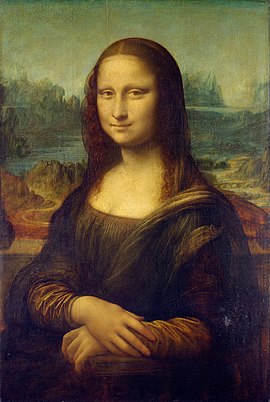Last week (29/05/22), a man disguised as an old lady smeared a cake on the Mona Lisa painting at the Louvre Museum in Paris.
Fortunately, the Mona Lisa is undamaged, because the bulletproof glass case protects the painting from the attack.
When the man was escorted out of the gallery by the security guard, he says in French: “Think about the Earth. There are people who are destroying the Earth. Think about it. All the artists tell you to think about the Earth. All the artists think about the Earth. That’s why I did this. Think about the planet.”
Image, Power, Violence, and Public Art
This is not the first time Mona Lisa being attacked by someone. In 1956, the painting was attacked one with acid, and another with a rock. In 2009, the painting was thrown by a woman with an empty teacup.
Why do people attack an artwork? What message do they want to convey to the public?
In his book Picture Theory (1994), W.J.T. Mitchell distinguishes three basic forms of violence in public art images. Firstly, the image is an act but also an object of violence. The image is doing violence to beholders, but also “suffering” violence as the target of vandalism, disfigurement, or demolition (Mitchell, 1994:381).
For example, the demolition of colonial and apartheid statues across Europe and America in 2020. The demolition and removal of colonial figure statues express the anti-slavery, anti-apartheid, and anti-racism positions since these statues glorify people who perpetuated slavery and present institutionalized racism.
Secondly, the image is a weapon of violence. The image becomes a device for the attack, coercion, or incitement. For instance, the stereotyping and racist images that insult people. This second type of image is not always bad. Another example can be found in the happening art that usually ‘strikes’ the audience’s mind to think about political-social issues.
Thirdly, the image is a representation of violence. It could be a realistic imitation of a violent act, a monument, trophy, memorial, or another trace of past violence. For example, dioramas or monuments of World War II or the 9/11 tragedy. (Mitchell,1994:382)
In the case of the Mona Lisa smeared with cake, the environment activist makes the painting an object of violence that is suffering as a target of an attack. However, the activist also wants the painting with cake on its surface, to become a weapon to voice his stance regarding earth.
Mona Lisa by Leonardo da Vinci is not only famous for its depictions of a woman in a calm Renaissance painting, but also for the landscape behind the sitter, which da Vinci called ‘aerial perspective’. The landscape portrays rows of trees, river streams, and winding paths. The landscape is perfectly blended with the curves of the woman’s hair and clothing that is created in the sfumato technique, “an artistic technique that uses subtle gradations of light and shadow“.

Some commentators believe the landscape and Mona Lisa are an analogy between the macrocosm and microcosm, a balance between the universe and creatures within it. The flowing fabric of Mona Lisa’s clothes represents nature’s flow, even the idea of universal flow forms.
Can you imagine how such a beautiful painting is destroyed by someone? Like the painting, we also cannot imagine how such beautiful and habitable earth is destroyed by humans’ activities.
Now, the environment activist’s idea to think about the earth through ‘Mona Lisa smeared with cake’ is more understandable. Da Vinci also came to paint wonderful paintings because of his close dialogue with nature through “observation, perception, representation, and creation”.
Watch: Man disguised as ‘old woman’ attacks Mona Lisa with cake

